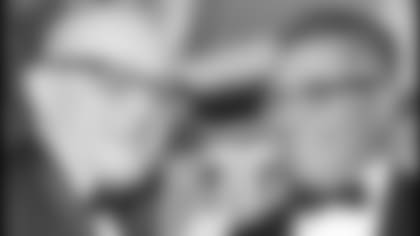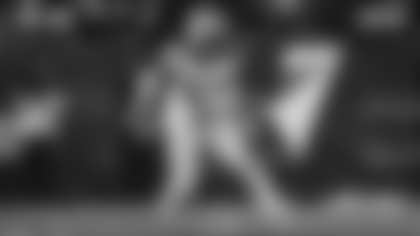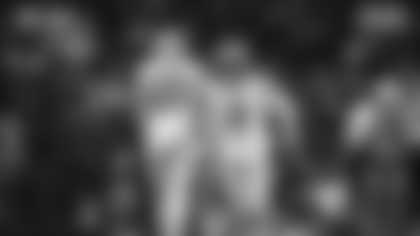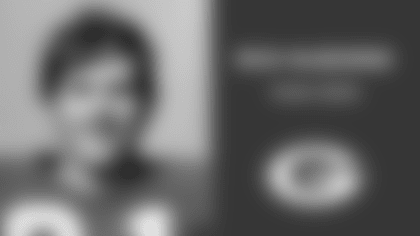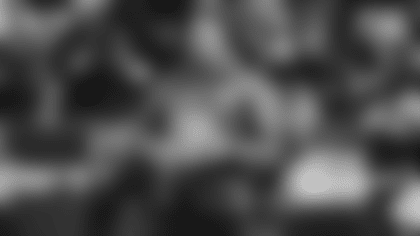(Editor's Note: This story is reprinted from the September 2000 edition of NFL Insider.)
The rivalry between the Chicago Bears and Green Bay Packers began innocently on a mild November Sunday afternoon at Chicago's Wrigley Field (then called Cubs Park) in 1921.
The Bears, then named the Staleys and one of the league's founding teams, were ready to show the ropes to the Packers, who were in their inaugural NFL season (although they had existed as a pro football club since 1919).
Chicago pounded the Packers 20-0, and, for extra measure, Staleys guard John (Tarzan) Taylor threw a sucker punch that broke the nose of Packers tackle Howard (Cub) Buck.
It was the opening bell in the start of a beautiful relationship.
For the past 80 years, the Bears-Packers series has had all the bitterness, intensity and animosity normally associated with rivalries.
Along the way, however, the teams have also developed a deep admiration and appreciation for each other, and that is what makes the Bears-Packers rivalry special. Maybe it's the kinder, gentler Midwestern roots they share or maybe it is because they have won a combined 21 NFL championships.
Whatever the reason, the Bears against the Packers is professional football. Without the Chicago-Green Bay rivalry, the NFL never would have developed the way it did.
"There have been great rivalries in American sports," says Packers Hall of Fame defensive end Willie Davis, "but none has had the fire in the belly that the Packers and Bears have had. None has had as much winning or emotion associated with it."
At the epicenter of the rivalry stand two of the most irrepressible and influential figures in NFL history -- Chicago's George Halas and Green Bay's Earl (Curly) Lambeau.
Each entered the league as founder, head coach and player. Halas controlled the Bears from 1920 until his death in 1983, roaming the sidelines as their head coach for a total of 40 years. Lambeau was the Packers' vice president and head coach from 1919-1949.
Halas and Lambeau both were strong-willed, disciplined, and driven to win. Their recurring clashes kept the flame of the rivalry hot.
Halas returned the opening kickoff in the 1921 game 20 yards. He also scored the Bears' final touchdown in that game.
During the 1921 NFL season, Halas discovered that the Packers had played three college players, including Notre Dame's Harry (Hunk) Anderson, whom Halas had coveted. Although Chicago also had used college players, Halas's complaints contributed to the temporary revocation of the Packers' franchise.
Lambeau asked that the franchise be reinstated for the 1922 season and he promised to obey the rules. He was granted his request, but not before Chicago had signed Anderson.
Halas canceled the 1922 Bears-Packers game, which had been scheduled for Thanksgiving Day at Hagermeister Park in Green Bay, when the Packers were not able to meet his demands for an increased gate guarantee of $4,000.
In fact, bad weather and poor attendance dogged the Packers throughout the 1922 season, forcing Lambeau to secure a loan from local merchants. A nonprofit corporation was set up to run the team, the start of the unique public ownership that exists to this day.
"George Halas would always greet us nicely when we were warming up, but if you were tackled on his sideline during the game, you would hear him saying something like 'Kill that s.o.b.!'" says Packers Hall of Fame running back Tony Canadeo, who played from 1941-44 and 1946-1952.
The more subdued Lambeau answered Halas by building a team that won three consecutive league championships (1929-1931).
The Packers began to turn it around in 1925, when they defeated Chicago for the first time, though the 14-10 decision was not without incident. When a Bears player went after Cub Buck's nose again, Buck broke the Chicago player's arm.
"Bears week was no fun for us," Canadeo says. "Lambeau wouldn't even let us smile that week."
"Halas and Lambeau are primarily responsible for the rivalry because each was so committed to winning," says Lee Remmel, who covered the Packers for the Green Bay Press Gazette from 1949-1974 and has served in the team's public relations office since 1974. "All the years they coached against each other, they never shook hands after the game."
Vince Lombardi, who was hired as the Packers' head coach in 1959, remembered the rivalry in the spirit of Lambeau. Lombardi hated losing as much as Lambeau and he was the perfect nemesis for Halas.
"Lombardi said you had to dislike everything about the Bears, even Halas as he stood on the goal line during warm-ups," Davis says. "Lombardi made it seem like Lambeau had never left."
According to players, the always intense Lombardi turned things up a notch the week before his team played the Bears.
One year, he had "Beat the Bears" painted on all the blocking bags. Other times, he would have his players switch jersey numbers and play different positions during practice -- just in case Halas was spying on him.
In 1963, the two-time defending champion Packers lost only twice -- both times to the Bears (10-3 in Green Bay and 26-7 in Chicago). The Bears edged the Packers in the Western Conference and went on to defeat the Giants 14-10 in the NFL title game.
Halas seemed to relish the confrontations with Lombardi.
About five minutes before one game with Green Bay, he knocked on the door of the Packers' training room. Green Bay's equipment manager answered the door, and Halas said he needed to speak to coach Lombardi.
Lombardi came to the door, and Halas told him, "Coach, I hope you have your team ready because we're going to kick your [butt]."
The influence of Halas, Lambeau, and Lombardi has extended well beyond their days as head coaches. The disdain the Packers have for the Bears -- and vice versa -- has been handed down through the eras.
"You didn't have to work hard to get up for the Bears because you knew they would be ready to play," says Bart Starr, who quarterbacked the Packers during the 1960s and coached the team from 1975-1983. "It was a great David and Goliath-type of happening -- a small-town team playing another from one of the country's largest cities.
"There was a true uniqueness about it, and it always felt that way because coaches and veterans would pass it down to rookies."
Regardless of the era, the style of play has borne familiar trademarks. Punishing tackles, bone-jarring blocks, and rugged individual efforts mark Packers-Bears games.
"All of our games with the Bears were thrilling," says Packers safety Willie Wood. "It didn't matter what the Bears' or Packers' records were when we played, you knew it was going to be a fistfight the whole time. The best team didn't always win. And if you weren't careful you could get hurt."
Confrontations between Clarke Hinkle, the Packers' 5-foot-11, 210-pound fullback, and Bronko Nagurski, the Bears' 6-foot-2, 225-pound fullback, highlighted the early years. Their most memorable match came in Chicago's 14-7 victory at Green Bay in 1933.
On a fake punt in the second quarter, Hinkle took the ball and headed around the end. With Nagurski closing in, Hinkle cut back and crashed headfirst into Nagurski. When the two collided, a thunderclap echoed through the stadium.
Hinkle was knocked backwards, and Nagurski was knocked out. Nagurski's nose was broken and blood streamed down his face.
The hitting also was intense during the Lombardi era.
"We accepted the fact that we would be bruised, hurting, battered, and sore after Bears games," Davis says.
One of the ugliest incidents in the series came in 1986 when Mike Ditka was coach of the Bears and Forrest Gregg was coach of the Packers. Both men had disliked each other as players.
The Bears were the defending NFL champions, and they defeated the Packers 25-12 at Green Bay in their first meeting in 1986. For the rematch in Chicago, Packers defensive end Charles Martin wore a towel that had a hit list of Bears players written on it. Quarterback Jim McMahon was at the top of the list.
In the second quarter of the game, Martin proved his list was more than just for inspiration. After McMahon threw a pass, Martin grabbed the quarterback, lifted him in the air, and slammed him to the turf. Martin was ejected for his flagrant late hit.
"There were going to be some late hits and probably some cheap shots," says linebacker Tim Harris, who played for Green Bay from 1986-1990. "We just knew that was part of playing the Bears."
The Bears-Packers rivalry also has featured some of the best moments by some of the greatest players in NFL history.
A total of 52 Pro Football Hall of Fame members ( 28 for the Bears and 24 for the Packers) have participated in the series.
Only 207 miles separate tiny Green Bay and behemoth Chicago, and the rivalry has become symbolic of the differences between the people of these two cities.
"Bears week was as much for the fans as it was for the players," Davis says. "Fans would approach us and tell us how important is was to beat the Bears. Even when we were in the race for the championship, the fans wanted us to treat Bear week even more special."
Art Olstad, who has attended Bears games since 1960, knows how important the rivalry is for the fans.
"We always get tickets from the Bears' office for the game in Green Bay, and we always sit in the end zone, three rows from the top of Lambeau Field," Olstad says. "One year, my friend, Dick Flynn, had his leg amputated from the knee down a couple of weeks before the Packers game. But there was nothing that could keep him from going to see the Bears and Packers. He hopped all the way up to row 60, and it was cold as hell that day."


